A Portal is a magical passage that will teleport a person, creature or cargo to another area. Unlike plain Teleport, which is transporting the bearer (or target) alone through the effort of mind and magic, Portals are gateways that can exist for continuous time. Portals can be passed through by anyone, even non-mages, if they can physically fit into the wormhole. Some portals are temporary or even one-use only, while others can exist (and remain active) for aeons.
Portals, like Waypoints, transport the player to another location. One key difference between them is that Waypoints can only teleport the player to areas that he/she has already been to, while portals are sometimes the only way to new or inaccessible areas.
Portals are most often blue or red, though other variations also exist. Generally, red color indicates that the portal was opened by the magic of Burning Hells, with some exceptions.
Diablo[]
Blue Town Portals were introduced in the very first Diablo and have remained a relatively consistent aspect throughout the series.
Town Portals can be opened with a Scroll of Town Portal to grant a quick return to Tristram.
The Unholy Altar is the only red portal in Diablo.
Diablo II[]
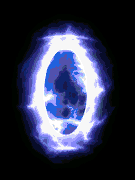
Blue Portal
Portals become even more predominant in Diablo II with multiple towns and many more locations available, with some being completely inaccessible until a portal to them is opened.
Blue Portals[]
Blue portals are always Town Portals, and thus give access to the Act's respective towns. They can be summoned by NPCs, certain Shrines, as well as players by use of a Scroll of Town Portal.
Once the player summons this portal, it only dissipates if the player that cast it goes through and returns. So it is very useful in co-operative play to have 2 party members create portals so that the entire party can go back to town, to heal and repair. Just make sure that the players who summoned the portals go through each other's portals and not through their own portal.
Red Portals[]
Red Portals are more powerful and permanent portals which never dissipate unless their use is finished.
They link many inaccessible areas in the world of Sanctuary.
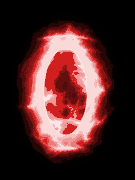
Red Portal
This is a list of all the areas linked by Red Portals:
- Tristram (This is the first red portal seen in Diablo II)
- Canyon of the Magi
- Harrogath
- Abaddon
- Pit of Acheron
- Infernal Pit
- Nihlathak's Temple
- Terror's End / Destruction's End (These portals do not lead to any location, but instead open the final cinematic for the game and expansion respectively; Terror's End is replaced with portal to Harrogath in the expansion)
- Moo Moo Farm
The portal to Tristram can only be opened by touching the Cairn Stones in a specific order, as found within the Scroll of Inifuss. This can only be done whilst one the Search for Cain quest.
The portal to the hidden Canyon of the Magi is opened by reading Horazon's Journal within the Arcane Sanctuary. Note that the journal is guarded by The Summoner. To get to the Arcane Sanctuary, players must find a hidden portal beneath the Lut Gholein Palace (in the former cellar of an ancient Vizjerei fortress).

The Infernal Gate
The portals to Abbadon, the Pit of Acheron and the Infernal Pit are extra areas that can be used for levelling and item hunting.
It may be useful to know that the portal to Nihlathak's Temple will not close unless the Waypoint at the Halls of Pain is activated. This may be useful to farm Pindleskin, a unique monster famous for high level drops.
The portal to the Moo Moo Farm is created by transmuting a Tome of Town Portal with Wirt's Leg in the Horadric Cube. It gives access to the legendary Secret Cow Level.
Infernal Gate[]
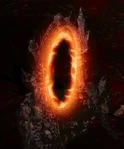
A picture of an Infernal Gate
In addition to the more typical portals, the Pandemonium Fortress in the fourth act is reached by entering the Infernal Gate, ritually summoned by the three Prime Evils. It is also the namesake of the third act: The Infernal Gate. It is red-orange and horrific to behold.
In-game, this gate is simply labeled as "Portal".
Diablo Immortal[]
Portals are also featured in Diablo Immortal. They are used to travel to specific waypoints when the player is not at a waypoint. Each class has a different animation when summoning a portal. The appearance (and at times, the animation) of portals can be changed with Cosmetic Sets.
A portal scroll is granted to the player in the prologue, which gives the player the ability to summon a Town Portal (though the portal scroll is only seen as a yellow glow in the activation of a town portal). Town portals are used to return to Westmarch from anywhere in the map, and to prematurely exit dungeons.
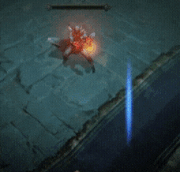
A monk uses a portal scroll
Hell Portals are portals linking a location on Sanctuary to another in the Burning Hells. They are characterized by the corrupted growths around them (for permanent portals only), and their burning edges. Examples are the permanent portals that serve as the entrances to the Domain of Horror, and the one Skarn created beneath the Ruins of Sescheron[1] that links the Frozen Tundra zone to the Realm of Damnation. A variant of Hell Portals called Infernal Hollows serve as the entrance to hidden dungeons in Frozen Tundra, Realm of Damnation, and Stormpoint.
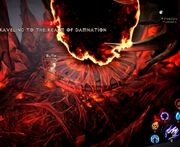
The permanent hell portal connecting Frozen Tundra to Realm of Damnation
Unstable portals have a chance to appear in Elder Rifts. They are granted by the rift modifier "Instability". These are portals with no set destination. Enter them at your own peril, or benefit.
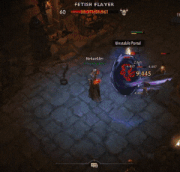
An unstable portal
Diablo III[]
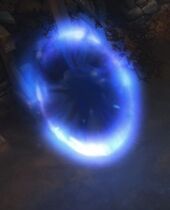
Town Portal
In addition to waypoints and Town Portals (which can now be summoned at will, without scrolls), some portals also exist in Diablo III, leading to following locations:
- Archives of Zoltun Kulle and subzones (Unknown Depths, Storm Halls and Soulstone Chamber)
- Realm of Shadow
- Realms of Chaos, Discord, Turmoil and Fright (opened by Infernal Machine in Heretic's Abode, New Tristram)
- High Heavens (opened by Diablo at the top of the Bastion's Keep Watchtower at the end of Act III)
- Unknown location (opened by Adria)
- Hell Rifts
- Gardens of Hope (opened by Auriel or connecting the two tiers)
- Silver Spire (including Great Span)
- Battlefields of Eternity
- Pandemonium
- Realm of the Banished (opened by Realmwalker)
- Pandemonium Fortress (including traveling between its levels and to the Heart of the Fortress)
- Malthael's portal used to transport the Black Soulstone to Sanctuary and back
- Treasure Realm
- Not The Cow Level
- Nephalem Rifts and Greater Rifts
- Set Dungeons
- Forsaken Repose and back to Greyhollow Island
- Secret arenas: Leoric's Gardens, The Killing Grounds, Blighted Sewer, The Archives, The Bound Keep, Nephalem Proving Ground
- The Darkening of Tristram (time-lost version of Tristram)
- ↑ Diablo Immortal, Realm of the Dead




